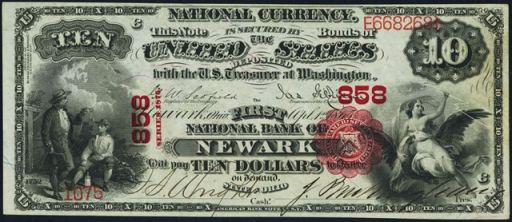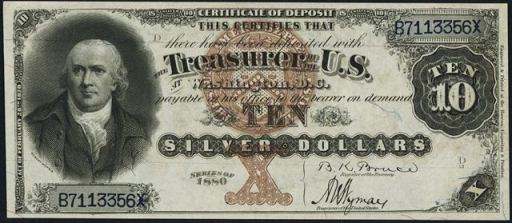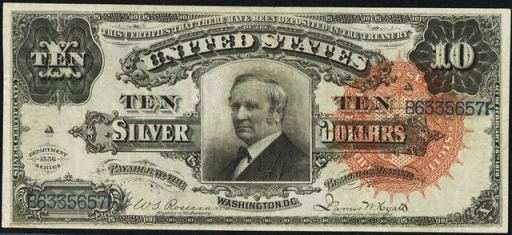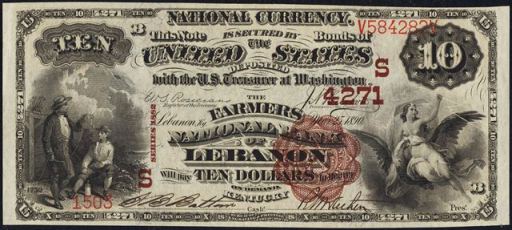Silver certificates, legal tenders, and national bank notes were all issued for the ten dollar bill denomination by The United States in the 1880s. The prices range from $100 to $10,000 and more.
1880 was the last year that legal tender “jackass” notes were printed. They were first introduced in 1869. Technically, they were still being printed in the early part of the 20th century. However, 1880 is the last series year. These are the most common $10 bills from the 1880s. Their exact value is based on their condition and signature combination. Despite all saying 1880, some have different seal types and colors.

The 1880 ten dollar silver certificate design from 1878 was carried forward a year to 1880, though it was changed slightly. These notes are still rare in general. High grade examples are especially elusive.

Another rare silver certificate from the 1880s is the series of 1886 $10 note. These are not extremely popular right now. They are rare and are usually a good bargain. Prices start at the high hundreds and go up from there.

There were two different types of ten dollar national bank notes being printed in the 1880s. The first type used was the series of 1875 notes still being issued by banks that opened in 1880 or 1881. However, you are much more likely to encounter Series of 1882 notes. These notes can have dates of 1882, 1883, 1884, 1885, 1886, 1887, 1888, or 1889 on them. Those dates correspond to when the national bank actually opened (or rechartered). That doesn’t mean that the bill was actually printed in that year.


Ten dollar national bank notes were printed by thousands of banks in hundred of different towns. Each is valued differently based on its condition, serial number, and bank of issue. If you have value questions, then just ask.
We are actively buying $10 bills. Please email us pictures of what you have and we would be happy to make an offer. Sales@AntiqueMoney.com


